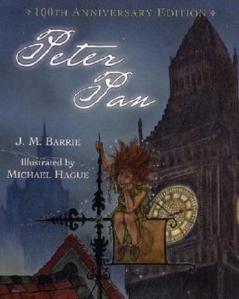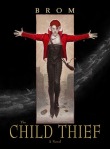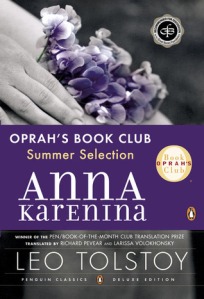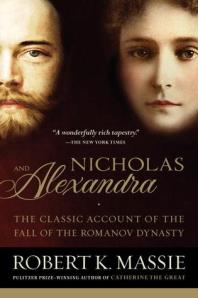
This fun meme is offered by http://brokeandbookish.blogspot.com/p/top-ten-tuesday-other-features.html . This week’s topic is books that we’re thankful for – so, without further ado:
1. JK Rowling’s Harry Potter series: I will be forever thankful to Jo Rowling for providing me with endless hours of reading pleasure, and countless shared memories. Both of my children were, and are, Harry Potter fans, and these books have become a part of our family history.
2. Rick Riordan’s Percy Jackson series: Again, this book series has provided family entertainment over the full five books. We listened to these audiobooks on family driving trips, rainy afternoons in our travel trailer, and a great deal oof knowledge about Greek mythologythat we would otherwise not have.
3. Frances Hodson Burnett’s A Little Princess: this was a book I loved as a child. It is also the first book that I reviewed on Amazon 12 years ago, and really started me on the process of reviewing books, which has ultimately led to this blog. It also brought me tremendous pleasure. Sara Crewe remains one of my favorite fictional characters.
4. L.M.Montgomery and Anne (with-an-e) Shirley: This is one of my favorite series of all time. I didn’t discover Anne of Green Gables until adulthood, and devoured the whole series in a couple of weeks. I am thankful for Anne – she is dreamy, girlish, kind, generous, funny, a bit tart, and so open for friendship and love that she is utterly irresistible.
5. Trixie Belden: Trixie Belden got me through the 5th grade, and through my first divorce. I like Nancy Drew just fine, but it was Crabapple Farm and Sleepyside, New York that I loved. My family moved from Nebraska to Idaho before the 5th grade, and reading, and rereading, the stories about Trixie, Honey, Jim, Di, and the whole gang of Bob-Whites is really what made that year bearable. Years later,, after my first marriage exploded, I spent a summer at home with my mom and dad, and my mom had found my collection of Trixie Belden books in a box. I reread them as an adult, and was, again, comforted and captivated by their sweet familiarity.
6. The Wolf and the Dove by Kathleen Woodiwiss: I stole this off my mother’s nightstand when I was in the seventh grade. It started a life long love of historical fiction in general, and historical romance in particular.
7. The Lord of the Rings by J.R.R. Tolkien: I can’t say enough about how much I love Tolkien’s classic trilogy. I read it for the first time in high school, and every few years ever since. There is an endless amount of content to this book, and I find something new in it every time I read it.
8. The Shell Seekers by Rosamunde Pilcher: This beloved book, along with Trixie Belden, got me through a pretty rough time. There is something about Pilcher’s writing that is comforting.
9. Alex Rider by Anthony Horowitz: There just aren’t enough books that appeal specifically to middle grade boys. Horowitz’s series does just this – and has been instrumental in convincing my 12-year-old son that reading can be, indeed, be fun.
10. Pride and Prejudice by Jane Austen: All of Austen’s works technically qualify as books for which I am thankful. But P & P is my favorite, and has remained my favorite for nearly 30 years, since I read it for the first time when I was 16 years old.
11. To Kill A Mockingbird by Harper Lee: Yes, I know this is supposed to be a “top ten.” But I reached the end of this post and realized that I had neglected to mention TKAM, which is the one book that I would say literally changed my life. I looked at the world differently after reading it. Thank you, Harper Lee.
Read Full Post »














